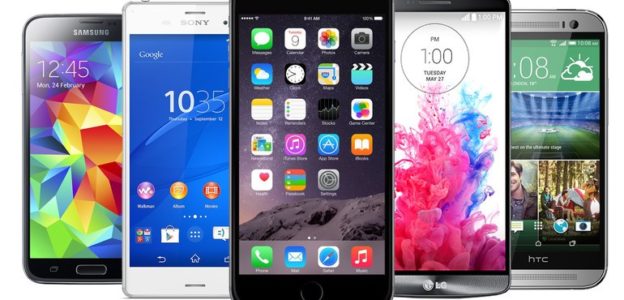One of the most rapid and prominent advancements in the field of technology over the last decade has been the improvement in smartphones and the rate at which the general consumer has taken them up. All of a sudden, everyone from a high-powered CEO of a major company, to the most technologically challenged of individuals has a powerful computing device in the palm of their hands.
Businesses have attempted to utilize the widespread popularity of smartphones to reduce their own costs through allowing employees to access corporate data on their personal devices rather than issuing a company device. At the surface level, allowing individuals to access their emails or even enterprise data and applications from a personal device seems harmless and cost cutting. However, there are many hidden costs and security issues that need to be dealt with before a company should consider allowing personal devices to enter the corporate world.
The introduction of a personal device has meant that most companies need to reimburse employees for using these devices in a corporate setting. Aberdeen’s 2010 “Wireless Expense Management” report shows that companies reimbursed an average of $74 per month whilst it costs only $84 per month to issue a corporate device. Another report by Aberdeen showed that most companies did not actually track personal usage on the devices meaning that the expenses claimed by the employee were not accurate and the company ends up reimbursing more money than actually required. Moreover, it is not only the actual reimbursement that is costly to the company, but also the time required to process it. On average it costs $29 to process the monthly expense reports for reimbursement, which on top of the $74 on average reimbursed, presents a loss to companies compared to giving employees a corporate device. On top of this, corporate devices cost the company only a small price to support and having a combined corporate wireless plan can save companies significantly per device. When looking at a large number of devices, this adds up to huge savings over the course of a few years. Therefore in order to make a personal device a viable option, companies must either offer no reimbursement or very little reimbursement and heavy regulation is required so that personal usage is not included.
The concept of “bring your own device” has put a further strain on the IT department of companies and presented a challenge when it comes to integrating devices with software, due to mobile device management being unsupported on many of these devices. Mobile device management is a necessity as it allows IT to remotely access devices to perform upgrades or wipe it in the event that they are lost or stolen. With access to the device, software can be uploaded or upgraded or the device can be locked or even wiped remotely. Whilst newer phones are starting to have support for device management, many still lack this support and the vast array of phones IT have to deal with makes it very difficult to centrally manage all the devices. Managing so many different phones and platforms and ensuring they are secure, up to date and compliant with regulations can prove a herculean task for an IT department, particularly as the number of phones increases. This also requires permission from the employee that their phone can be wiped in the case that it is lost or stolen. With a corporate device, this problem is bypassed due to the homogeneity of the devices that require management.
Longevity is a large issue for smartphones and can present additional costs to an IT department. Smartphones are often dropped, broken, lost or stolen and often require replacement. In the first year, 18% of non-rugged devices require replacement whilst after three years this figure jumps to a staggering 82.6%. In contrast, a rugged device is replaced only 18.2% of the time after a three-year period. This constant replacement presents additional time and costs to the IT department who are required to constantly reconfigure and make compliant new devices; a time consuming and frustrating process. Personal devices further often have flaws when it comes to application compatibility. Whilst checking emails is something that almost all devices can do, when it comes to running applications or performing tasks, these devices often have shortcomings. A specialised corporate phone with a barcode scanner easily surpasses an individual attempting to scan barcodes with an iPhone and will save many hours over the long run as well as preventing frustration. Other corporate applications that are required are often not compatible with the operating systems that are found on smartphones, making them an unwise choice for companies, particularly due to the heterogeneity that will be found amongst individual smartphones.
The advent of smartphones is something that companies can take advantage of if regulated and thought through. There are many hidden costs and expenses with simply switching over to a “bring your own device” policy in the workforce. Rather, companies need to regulate the types of devices that will be allowed in order to ensure they can be centrally managed by an IT department efficiently and that applications are compatible with them. The reimbursement for use needs to be properly managed to ensure that the company is not paying for personal usage and employee efficiency isn’t dropping due to the easy access to entertainment, social media and text messaging. Finally, security on these devices needs to be managed so that they can be remotely accessed and locked or wiped in the event of theft and information needs to be properly encrypted to ensure safety. If companies cannot manage these factors, then a corporate device is still more efficient and cost-effective particularly in the long run.










